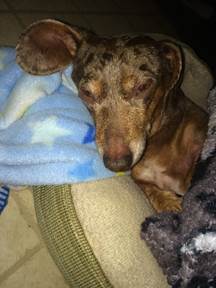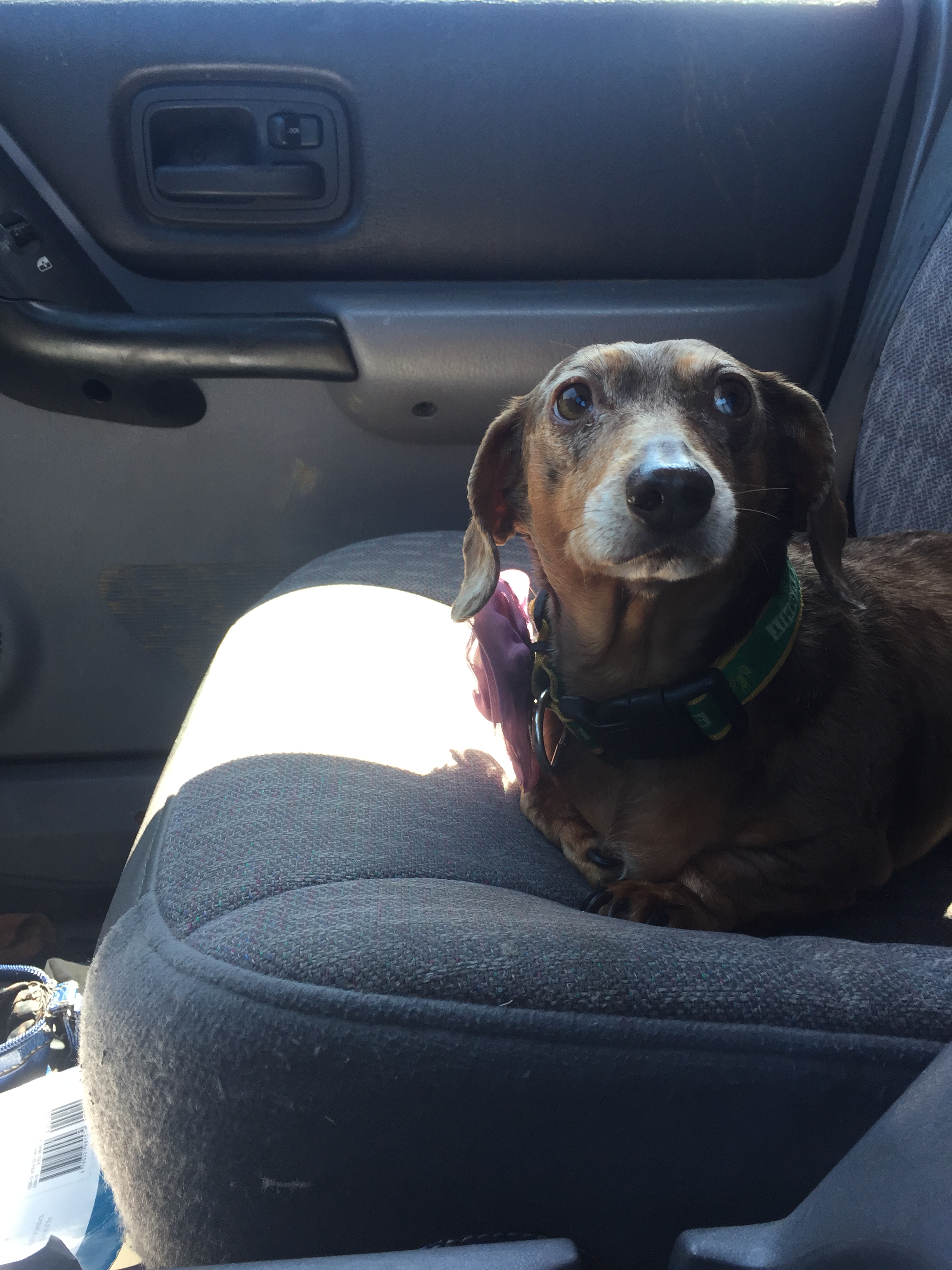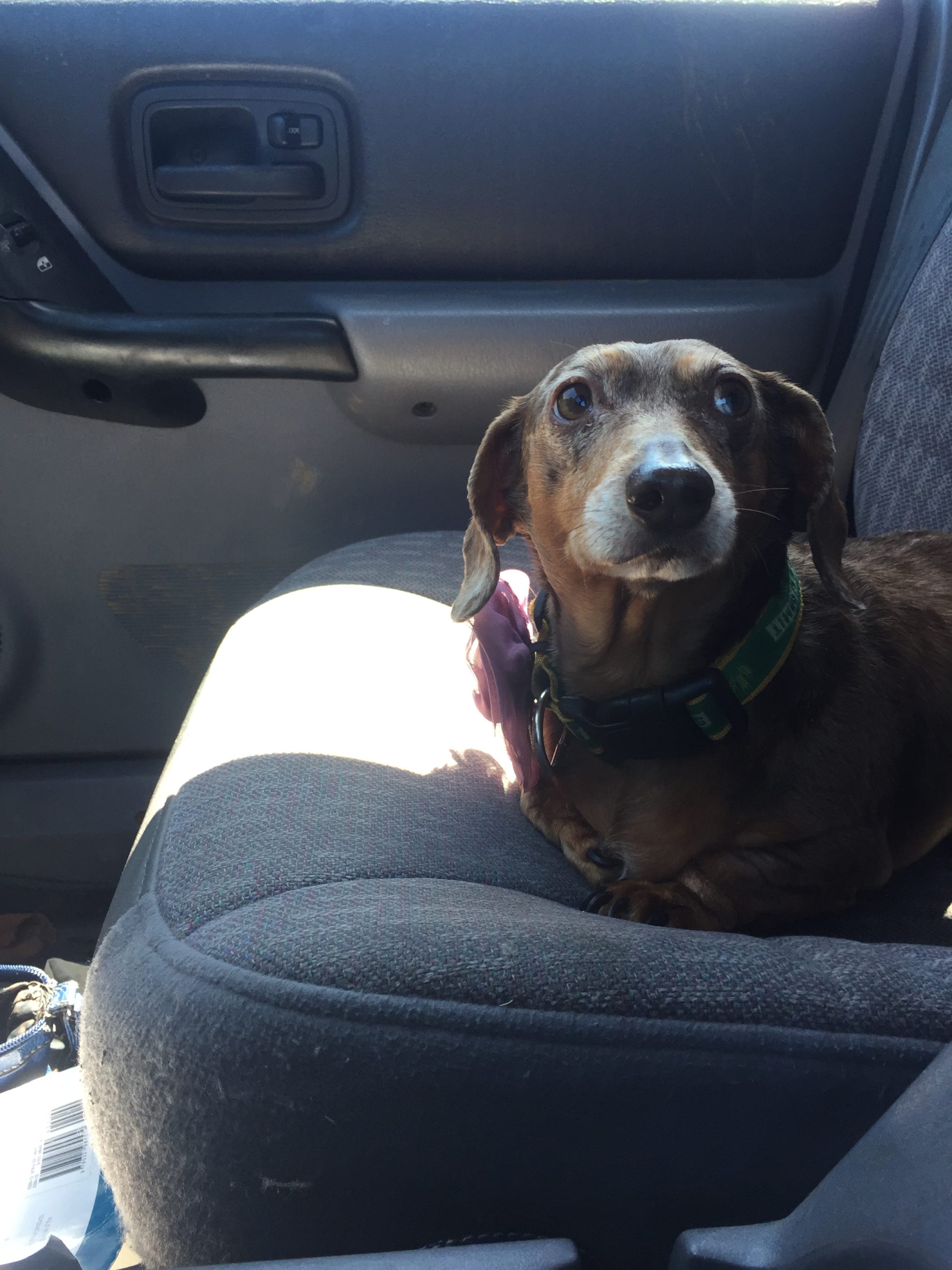My Favorite (Itchy Skin) Dog
I am allergic to dogs. I can feel it in my breathing, and I wash my hands after touching dogs to keep from getting a rash. My four children grew up without a dog, although at one time or another we had a pet bunny, a goldfish, and a parrot which the kids named “Petey”.

Itchy Skin on Bean
I moved from East Tennessee to Denver, Colorado in 2008. Emily, our youngest, was just entering high school and would have preferred to be left behind in Tennessee. She negotiated hard, and her ”relocation package” included some new clothes, shoes and a puppy. Thus did I find myself with a dog.
We found “Bean” at Flick Kennels near Canon City, Colorado; we’re still pictured on their web site (http://www.flickennel.com/name_that_pup.html). Bean is a very expressive miniature dachshund with a chocolate-silver dapple coat colored like a pinto bean. Doxies are supposed to be less allergenic than other breeds. She has been a lively dog and I was proud to train her as a “flying wienie dog”-she’ll jump for food.
But Bean could use Obamacare, or at least “affordable care”. She hurt her back trying to jump on the sofa and had neurosurgery a few years ago. My daughter nursed her back to being able to walk and even “fly”, though not so high.
Beanie suffers from skin problems; she is constantly itching and has spots of thin or missing fur. I’ve wondered if dogs are embarrassed by that.

I recently had my Pharmacy Compounding students compound some dog treats containing diphenhydramine 12.5 mg, which Bean had been taking for itching. BTW, diphenhydramine has about the best anti-itching properties of the nonprescription antihistamines.
Bean ran off with Emily to upstate New York. So, the other day Emily sent me a text with a picture of Bean sitting in the front seat of the car on her way to see the vet.
And would I like to provide subsidized veterinary care for my favorite dog?
Bean was prescribed a medication called oclacitinib (Apoquel™), which turned out to be both interesting and expensive. Atopic dermatitis, a type of eczema, is a common chronic skin disease characterized by inflammation, itching and a loss of the skin’s barrier function, making it even easier for substances to penetrate and further irritate the skin. Just as in humans, initial approaches include ruling out certain infections and parasites as well as identifying and avoiding environmental or food allergens; later approaches can include treatment with antihistamine, steroid or specialty drugs.
Oclacitinib is a specialty drug that inhibits a cell signaling pathway called JAK-STAT which influences the development of chronic skin inflammation. It is similar to the human rheumatoid arthritis drug Xeljanz (Tofacitinib™), which is even more expensive.

Itch
My dog’s itchy skin highlights some important points:
Animals suffer from many of the same diseases as humans, so as we study successful treatments for animals we identify potential treatments for humans.
If you find yourself with itchy skin, talk with your prescriber or pharmacist. Sometimes drugs can cause skin reactions, and often nonprescription or prescription medications can help skin conditions. Here’s hoping that my favorite dog finds relief, and that you do well, too.
Resources:
- https://www.zoetisus.com/bmst-minisite-apoquel/
- https://www.nlm.nih.gov/medlineplus/itching.html
- NIH National Institute of Arthritis and Musculoskeletal and Skin Diseases http://www.niams.nih.gov/health_info/atopic_dermatitis/#a
- NIH National Institute of Allergy and Infectious Diseases https://www.niaid.nih.gov/topics/eczema/Pages/default.aspx












